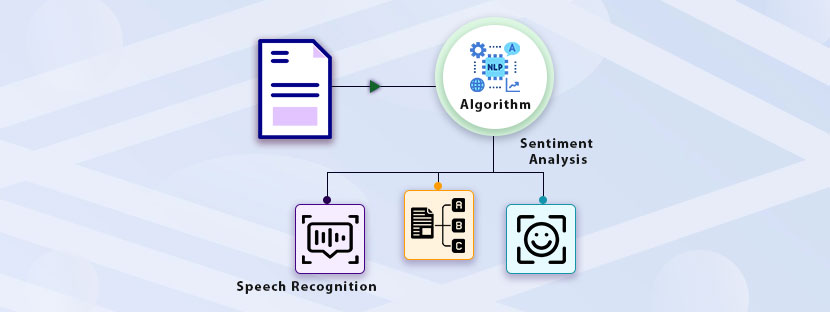Planning to replace manual work with automation? If so, this is the best decision you can ever take at this present time. Don’t worry! more than 60% of companies operating in the IT sector will adopt automation in the next five years.
Automation will not take away jobs rather it will create more jobs in this sector. From the invention of machines till now, replacing manual work has always been the focus. Companies across the globe nowadays automate their business process but have not rejected manual processes completely. They prefer manual inspection in the automated process for better outcomes.
Overcoming the barrier of human limitations is the prime reason for the development of automation. A company generally targets a few goals to achieve with the proper utilization of human resources and skills. So, it also sets a timeline to achieve these goals. With automation, a company can achieve its goals faster and utilize all resources properly.
However, the idea replace manual work with automation is not that easy. Businesses from their end hire experts via outsourcing to perform these tasks. This blog aims to find a detailed answer to show how combining manual with automation fetches success.
Let’s see!
1. Why Automate Manual Processes?
The growth of technology in the business process over the past decade has been very positive. The business environment is changing faster and accommodating the new development of technologies. Automation helps businesses from multiple aspects and minimizes dependency on the manual process. The adoption rate of automation in business including the security, healthcare, manufacturing, IT, etc industries is higher.
Here’s how this happens;
1.1 Overcome Human Limitations
Human beings have a capacity or limit of working, from physical level as well as mental level. However, robots have no such limitation and they can perform tasks without any rest. They just need insurrection from the human end to do their task accurately. Automated machines or robotic technology can perform much better than humans. You can distinguish between the manual process vs automated process to check that.
However, you cannot replace manual work with automation completely because of validation needs. An automated system can perform instructed work with ease. Also, it can perform work rapidly without taking any breaks, unlike human beings. The level of accuracy is higher in the machine-generated work if guided properly. You can outsource a company that has experience in automation to adopt it.
1.2 Far More Consistent
Automated work is more consistent than manual and it never stops until the machine fails. The business process outcome will remain the same throughout the year through automation. However, you can observe a fluctuating trend in the outcome when you involve manual processes in the system. Organizations involved in Information Technology need continuous and consistent support hence automation suits this sector.
2. Explaining the Process of Automation
Automating the complex business process is the main goal of automation. Automation integrates into the system via three simple steps. First, the technology makes the process smart and automatic. Second, all the information gets stored in the centralized database. Finally, it minimizes the dependency on people for input.
besides, robotics technology also aims to replace manual work with automation systems. Let’s understand automation with the example of automated car washing bars. When you enter the bar then you just choose the type of car wash and that’s it. Thereafter, the machine requests payment details and accepts payment. The system also guides the driver when to stop and change the position of the car for better washing.
Let’s focus on the car-washing automation system you can observe that the system uses sensors. These sensors detect cars and guide drivers throughout the washing process. Besides this, it also blows dry cards, performs wax application, and does other things.
3. Choosing the Right Automation Model
When organizations plan to replace manual work with automation then choosing the right model becomes crucial. Implementing the right model will make the business successful and bring efficiency. Each of the models has some advantages as well as disadvantages. Following a balanced way is the best to choose the right model for your organization.
I. Centralized Model
In a centralized automation system, the main power of execution relies on the headquarters. The headquarters builds and maintains the automation project. In this model, the project of automation in business process gets initiated in the HQ first. Thereafter, it gets promoted to other divisions.
II. Federated Model
Slightly different from the centralized system, divisions have some automatic systems in this model. The headquarters only performs a few tasks and other divisions control the rest. Automated franchise businesses like Burger King, KFC, etc are very good examples of federated models.
III. Hybrid Model
To replace manual work with automation systems, a hybrid model serves the best. This model is a combination of the other two models; centralized and federated. With this model, some parts of the organization will become automated while others remain in central control. It also facilitates to development of a combination of automation and manual process for the business.
4. Manual Process vs Automated Process
The tussle of adopting automation starts with replacing the manual process or eliminating it first. Manual processes in business take unnecessary time and cause delays in generating outputs. However, adopting the process of automation can speed up the process by manifolds and it increases the efficiency of the system. Besides, both manual and automated system has many sharp distinctions, which are.
4.1 Monitoring System
In a manual process, the executive or the supervisors approve every task before marking it as final. However, in automation, the system holds some pre-set conditions. It just approves tasks based on the previous judgments. Moreover, executives track the working process via emails while automation works on a digital database.
4.2 Accomplishment Time
A system with a manual process takes time to assess files while the same system with automation will less time. For the same work, an automated system is super fast in facilitating business processes. You can replace manual work with automation systems if you want to bring efficiency to the business process.
4.3 Facilitate Collaboration
Without a proper collaboration mechanism, collaboration can turn into chaos in a manual process. Working together can be challenging if not guided and tracked properly. However, on the other hand, an automated system is far more organized and simple when it comes to collaboration. It facilitates smooth collaboration between parties and encourages working in coordination.
4.4 Reduce Errors
In manual processes, employees generally perform all the tasks with their skills. Despite skills, it’s human tendency to make a little error in the work. However, you would not find simple errors in business processes automation model. An error will only come if the system is unable to process instructions.
Therefore, your idea to replace manual work with automation will suit at this point when all businesses are adopting it. With the help of an outsourcing company, you can adopt automation in business better. They will complete the integration of automation technology in your process to make your journey smooth. Besides that, they have years of experience in automation adoption.
5. Key Benefits of Automating a Manual Process
Automation of manual business processes brings about numerous advantages that can enhance efficiency. It will also reduce errors and streamline business operations. One key benefit of business process automation is the substantial increase in productivity. Businesses that have adopted automation are performing better than others.
By automating repetitive tasks, employees can focus on more complex and value-added activities. This not only accelerates the pace of work but also contributes to better job satisfaction. It will make workers engaged in the process in a more stimulating and meaningful way. Let’s find out other key benefits of business process automation in this section.
5.1 Minimizes Errors
Process automation minimizes the likelihood of errors that often accompany manual processes. Human errors, such as data entry mistakes or oversights, can have costly consequences for businesses. Businesses replace manual work with automation to eliminate errors. So what is best between manual process vs automated process?
Automation helps eliminate these errors by executing tasks with precision and consistency. This, in turn, leads to improved accuracy in data handling and reporting, enhancing the overall quality of work. A combination of automation and manual process also helps businesses to reduce errors.
5.3 Better Allocation of Resources
Business Process automation facilitates better resource allocation. Businesses can optimize their workforce by allocating human resources to tasks that require creativity, critical thinking, and decision-making. It can delegate repetitive and rule-based activities to be handled by an automation model. This strategic distribution of tasks ensures that each resource is utilized to its full potential, fostering a more efficient and dynamic work environment.
5.4 Consistent Support
Enhanced consistency is a key aspect that automation brings to manual business processes. Automated systems follow predefined rules and procedures consistently, ensuring that tasks are executed in the same manner every time. The reason to replace manual work with automation is consistency. This consistency is crucial for maintaining high standards in product or service delivery. Also. it will foster customer satisfaction and build a reliable brand image.
5.5 Results within Time
Time efficiency is a significant driver behind the adoption of automation in the business process. Manual processes often involve time-consuming tasks that can be expedited through automation. Whether it’s data processing, document generation, or communication workflows, automation accelerates these processes.
This would also lead to faster turnaround times in crucial business operations. This increased speed not only boosts productivity but also enables businesses to meet tight deadlines and respond promptly to customer demands.
5.6 Manages Data & Analytics
In addition to these benefits, automation contributes to improved data management and analytics. Automated systems generate and collect data consistently, providing businesses with valuable insights into their operations. This data-driven approach facilitates better decision-making and allows organizations to identify trends. Businesses replace manual work with automation to analyze performance and make informed strategic choices also.
5.7 Makes Process Scalable
Business process automation plays a pivotal role in enhancing scalability. As businesses grow, manual processes can become a bottleneck. Automation systems can easily adapt to increased workloads without the need for a proportional increase in human resources. This scalability ensures that businesses can expand their operations seamlessly and efficiently, responding to market demands and opportunities.
Hence, the benefits of automating manual processes are diverse and impactful. From increased productivity and cost reduction to improved consistency and scalability, automation reshapes the way organizations operate, paving the way for a more efficient, reliable, and competitive business environment. You can choose an outsourcing company that has experience in automation to get these benefits.
6. Combination of Automation and Manual Process
With time, most businesses replace manual work with automation systems and it has become a trend these days. However, adopting a complete automation process has many disadvantages also. On the other side, the manual process is not free from error at all. Both systems have their separate benefits as well as disadvantages. So what you can do now? Well, adopting a mix of automation and manual process suits here.
6.1 Taking an Informed Approach
In the short term, manual business processes can bring the highest efficiency than automated systems. Integrating automation technology business processes needs proper investment, which can cause financial drainage. Therefore, for a short time, a manual system is efficient in handling the business process.However, if you aim for the long run, therefore, automation is way better than manual processes. It will effectively reduce the cost factors and bring efficiency to the system within a quick span.
Therefore, having the right mix of manual as well as automated would suit the best amid this situation best. You can target for the long run and adopt a manual data input process for now. Gradually, with time, you can eliminate the manual process to a certain extent. Remember that, you can replace manual work with automation for that tasks that are related to data analytics. Besides that, you can keep the data entry processes manual via outsourcing.










